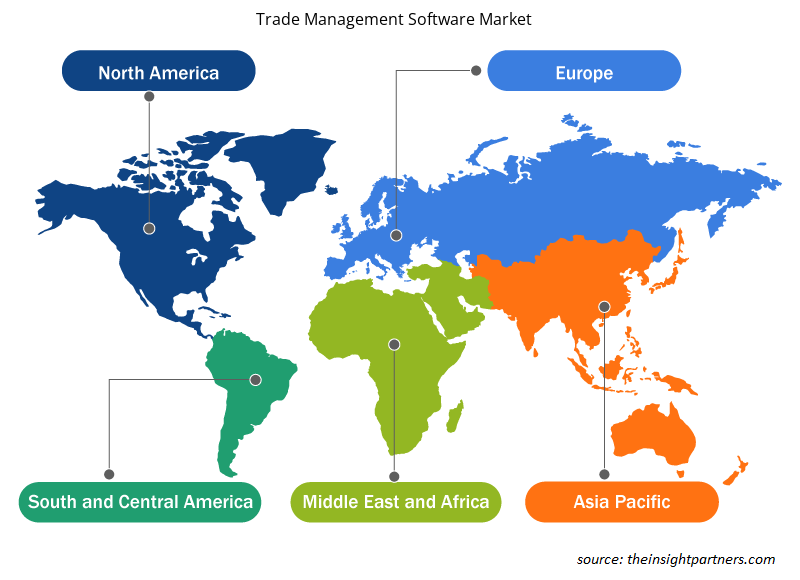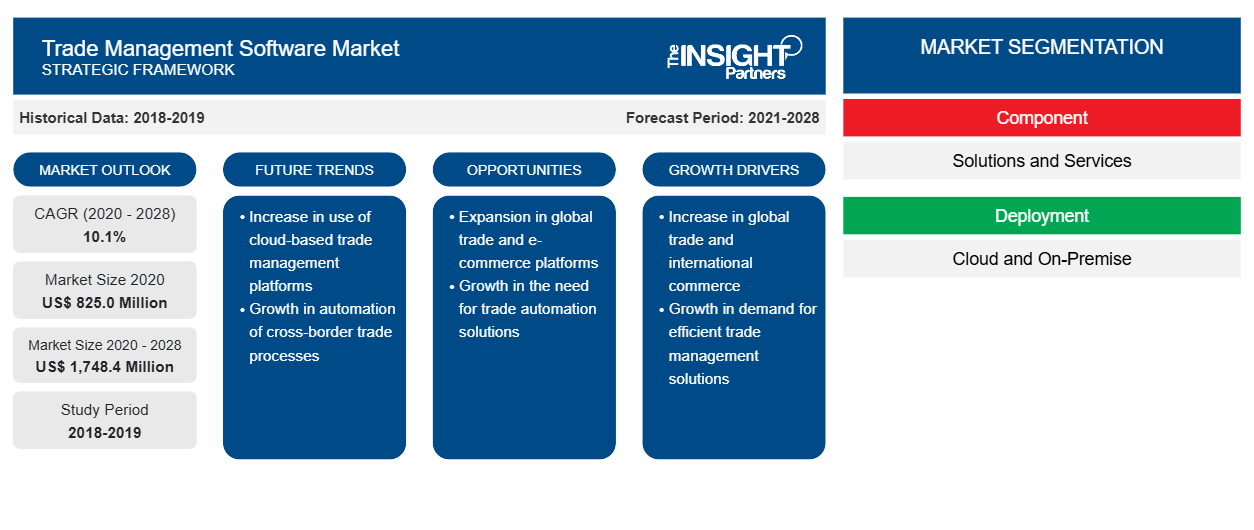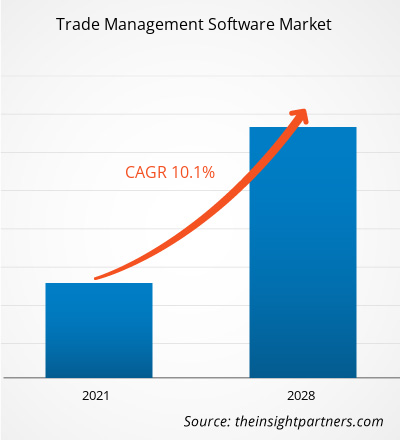[調査レポート] 収益面では、世界の貿易管理ソフトウェア市場は2020年に8億2,500万米ドルと評価され、2028年までに17億4,840万米ドルに達すると予測されています。また、2020年から2027年の予測期間中に10.1%のCAGRで成長すると予想されています。
貿易管理ソフトウェア市場は、北米、ヨーロッパ、APAC、MEA、SAMの5つの主要地域に大まかに分かれています。2020年には、APAC地域が貿易管理ソフトウェア市場を支配しました。APACは、それぞれの製造業で高い成長を遂げている多くの発展途上国で構成されており、この地域は世界的な製造業の中心地となっています。中国や、インド、韓国、台湾、ベトナムなどの他の発展途上国では、多くの企業が、低~中程度のスキルを持つ製造施設を、より低コストの労働力を持つ近隣諸国に移転するよう誘致しています。さらに、これらの国の政府は、この地域への外国投資を改善するための開発を行っています。長年にわたり、この地域の製造業の支出は大幅に増加しており、今後もかなりの成長率で成長すると予想されています。製造業の支出のこの劇的な増加と新しいテクノロジーの採用は、この地域での貿易管理ソフトウェアの需要を促進する主な要因です。
COVID-19パンデミックが貿易管理ソフトウェア市場に与える影響
COVID-19パンデミックは、2019年12月以来、世界中のあらゆるビジネスに影響を及ぼしています。ウイルス感染者数の継続的な増加により、政府は人や物の輸送を禁止せざるを得なくなりました。製造部門は、一時的な工場閉鎖と生産量の低下により深刻な損失を被り、小売、電子商取引、物流部門の成長を妨げました。さらに、政府によって課された社会的または物理的な距離を置く措置により、物流やその他のサービスプロバイダーの業務が制限されています。この混乱により、貿易ビジネスは衰退しています。これらの逆境により、2020年5月の世界貿易量は、2019年5月の貿易量と比較して17.7%減少しました。2020年の最初の5か月間の減少は広範囲に及んでいましたが、日本、米国、欧州諸国からの輸出に大きな影響を与えました。COVID-19パンデミックによる混乱にもかかわらず、長いロックダウン後にビジネスが再開されるため、今後は貿易が急増する可能性があります。ソーシャルディスタンス対策が実施される中、電子商取引、物流、小売など貿易活動に関わる分野では、サプライチェーンのスピードを確保してコンプライアンスを満たすために、貿易管理ソフトウェアの導入に注力しています。このように、COVID-19によってもたらされた不確実性により、物流におけるクラウドベースのソフトウェア/SaaSの使用範囲が拡大しています。
要件に合わせてレポートをカスタマイズする
このレポートの一部、国レベルの分析、Excelデータパックなど、あらゆるレポートを無料でカスタマイズできます。また、スタートアップや大学向けのお得なオファーや割引もご利用いただけます。
- このレポートの主要な市場動向を入手してください。この無料サンプルには、市場動向から見積もりや予測に至るまでのデータ分析が含まれます。
市場洞察 – 貿易管理ソフトウェア市場
コスト削減とリアルタイムの可視性
貿易は、サプライヤー、運送業者、倉庫のネットワークを介した複数の商品と情報の流れを伴う複雑なプロセスです。ソフトウェアソリューションは、リアルタイムおよび現実世界のデータの分析を通じて、ユーザーがこれらの複雑さをより正確かつ簡単に処理できるようにし、非効率性を削減します。これらのソフトウェアシステムの実装により、サプライチェーンの機能も向上し、運用のリアルタイムの可視性も提供されます。さまざまな業界での競争力の向上は、自動化とデジタル化への投資を促す大きな要因です。さらに、クラウドベースのソリューションの採用により、輸出品のリアルタイムの可視性が強化され、運用コストが削減されます。ブロックチェーン、人工知能(AI)、予測分析などの新興技術を物流業務に実装することで、今後数年間で世界の貿易管理ソフトウェア市場の成長がさらに促進されるでしょう。
コンポーネントセグメントの洞察
コンポーネントに基づいて、貿易管理ソフトウェア市場はソリューションとサービスに分割されます。ソリューションセグメントは、予測期間中に世界の貿易管理ソフトウェア市場の主要セグメントになると予想されます。ソリューションセグメントには、貿易コンプライアンスと国際貿易の可視性と実行が含まれます。さらに、国際貿易の可視性と実行のオペレーションには、国境を越えた出荷と輸送が含まれます。これらは、国際貿易パートナーのイベントとプロセスに対する可視性を提供します。これらのプロセスは国際的である必要があり、商業貿易パートナー間の取引と契約が含まれます。
導入セグメントの洞察
導入に基づいて、貿易管理ソフトウェア市場はオンプレミスとクラウドに分けられます。クラウド セグメントは、予測期間中、世界の貿易管理ソフトウェア市場の主要セグメントになる可能性があります。クラウド導入は、主に中小企業で採用されています。所有コストの低さ、メンテナンスとアップグレードのコストの削減、最新機能へのアクセスは、オンプレミス導入に対するクラウド導入の主な利点の 1 つです。
組織規模セグメントの分析
組織の規模に基づいて、貿易管理ソフトウェア市場は、中小企業、中堅企業、大企業に分類されます。大企業セグメントは、予測期間中、世界の貿易管理ソフトウェア市場の主要セグメントになると予想されます。世界的に、効率を高め、全体的な運用コストを最小限に抑えるために、いくつかの組織で貿易管理ソフトウェアの需要が増加しています。このソフトウェアの採用は、適切なサプライチェーンを構築し、全体的な運用の柔軟性を獲得するために、大企業の間で一般的な慣行です。
業界セグメントの洞察
業界別では、予測期間中、物流および輸送セグメントが世界の貿易管理ソフトウェア市場の主要セグメントになると予想されています。従来を超えるサービスを提供する物流プロバイダーの需要が高まっています。場合によっては、サードパーティの物流プロバイダーがパートナーの海外貿易ゾーンを運営または管理します。また、他のケースでは、倉庫保管や、商品の生産または調達に関連する付加価値サービスも提供します。さらに、商品をソースからエンドユーザーに効率的かつ経済的に転送するために不可欠なすべての物流および輸送プロセスを整理します。
市場プレーヤーは、競合他社と競争するために、自社製品に高度なテクノロジーと機能を統合することにより、新製品の革新と開発に注力しています。
- 2021 年 1 月、SAP 香港とコンサルティング大手の Deloitte が提携し、国境を越えた貿易に携わる企業に大きなメリットを提供しました。
- 2019 年 1 月、Bamboo Rose はサブスクリプション モデルとしてサービスを開始しました。これにより、顧客はより適切な計画、革新、および複数のエンタープライズ小売コミュニティとの連携が可能になり、テクノロジー投資を 10 ~ 30 パーセント節約できます。
- トムソン・ロイターは2019年3月、グローバル貿易管理(GTM)ソフトウェアプロバイダーのIntegration Pointを非公開の金額で買収し、北米を拠点とする輸入業者と輸出業者の顧客層を大幅に拡大しました。
貿易管理ソフトウェア市場の地域別洞察
予測期間を通じて貿易管理ソフトウェア市場に影響を与える地域的な傾向と要因は、Insight Partners のアナリストによって徹底的に説明されています。このセクションでは、北米、ヨーロッパ、アジア太平洋、中東およびアフリカ、南米および中米にわたる貿易管理ソフトウェア市場のセグメントと地理についても説明します。

- 貿易管理ソフトウェア市場の地域別データを入手
貿易管理ソフトウェア市場レポートの範囲
| レポート属性 | 詳細 |
|---|---|
| 2020年の市場規模 | 8億2,500万米ドル |
| 2028年までの市場規模 | 17億4,840万米ドル |
| 世界のCAGR(2020年 - 2028年) | 10.1% |
| 履歴データ | 2018-2019 |
| 予測期間 | 2021-2028 |
| 対象セグメント | コンポーネント別
|
| 対象地域と国 | 北米
|
| 市場リーダーと主要企業プロフィール |
|
貿易管理ソフトウェア市場のプレーヤー密度:ビジネスダイナミクスへの影響を理解する
貿易管理ソフトウェア市場は、消費者の嗜好の変化、技術の進歩、製品の利点に対する認識の高まりなどの要因により、エンドユーザーの需要が高まり、急速に成長しています。需要が高まるにつれて、企業は提供内容を拡大し、消費者のニーズを満たすために革新し、新たなトレンドを活用し、市場の成長をさらに促進しています。
市場プレーヤー密度とは、特定の市場または業界内で活動している企業または会社の分布を指します。これは、特定の市場スペースに、その市場規模または総市場価値に対してどれだけの競合相手 (市場プレーヤー) が存在するかを示します。
貿易管理ソフトウェア市場で事業を展開している主要企業は次のとおりです。
- アンバーロード株式会社
- バンブーローズ合同会社
- エクスペディターズインターナショナルオブワシントン社
- インテグレーションポイントLLC
- リビングストンインターナショナル
免責事項:上記の企業は、特定の順序でランク付けされていません。

- 貿易管理ソフトウェア市場のトップキープレーヤーの概要を入手
世界の貿易管理ソフトウェア市場は次のように分類されています。
貿易管理ソフトウェア市場 – コンポーネント別
- 解決
- サービス
貿易管理ソフトウェア市場 – 導入別
- オンプレミス
- 雲
貿易管理ソフトウェア市場 – 組織規模別
- 大企業
- 中規模企業
- 中小企業
貿易管理ソフトウェア市場 – エンドユーザー別
- 小売・CG
- 自動車
- 物流・輸送
- ヘルスケアと製薬
- 政府
- 航空宇宙および防衛
- 化学薬品と鉱物
- 製造業
- その他
貿易管理ソフトウェア市場 – 地域別
北米
- 私たち
- カナダ
- メキシコ
ヨーロッパ
- フランス
- ドイツ
- イタリア
- 英国
- ロシア
- その他のヨーロッパ
アジア太平洋(APAC)
- 中国
- インド
- 韓国
- 日本
- オーストラリア
- その他のアジア太平洋地域
中東・アフリカ(MEA)
- 南アフリカ
- サウジアラビア
- アラブ首長国連邦
- MEAの残り
南アメリカ(SAM)
- ブラジル
- アルゼンチン
- SAMの残り
貿易管理ソフトウェア市場 – 企業プロファイル
- アンバーロード株式会社
- バンブーローズ合同会社
- エクスペディターズインターナショナルオブワシントン社
- インテグレーションポイントLLC
- リビングストンインターナショナル
- MIC
- オラクル社
- QAD株式会社
- クエスタウェブ
- SAP SE
- 過去2年間の分析、基準年、CAGRによる予測(7年間)
- PEST分析とSWOT分析
- 市場規模価値/数量 - 世界、地域、国
- 業界と競争環境
- Excel データセット



Report Coverage
Revenue forecast, Company Analysis, Industry landscape, Growth factors, and Trends

Segment Covered
This text is related
to segments covered.

Regional Scope
North America, Europe, Asia Pacific, Middle East & Africa, South & Central America

Country Scope
This text is related
to country scope.
よくある質問
The logistics & transport segment is leading the global trade management software market. The demand for logistics providers offering services that are beyond traditional is rising. In some instances, third-party logistics providers operate or manage foreign trade zones of their partners. Also, in other cases, they provide warehousing as well as value-added services associated with the production or procurement of goods. Moreover, they also organize all the logistics and transportation processes essential to transfer goods from source to end users efficiently and economically.
The management of global trade is more complex than the management of domestic distribution. Diversification in country laws and regulations, currencies, languages, time zones, and transport modes are among the major factors influencing the trade management market growth. Complexities involved in the global trade are compounded by the unique position of each global trade participant in the field. Vendors offer customized GTM solutions that are flexible and adapt to changing regulations and business requirements.
Presently, North America held the largest share of the global trade management software market. The region experiences huge export and import of goods between the US and Mexico will propel the demand for trade management software. Companies such as SAP SE, Oracle Corporation, Descartes, and QAD Inc. are a few of the key players prevailing in North America to address the trade management needs. The presence of companies offering trade management software in the region would attract more companies toward these software solutions owing to the rise in trade.
Trends and growth analysis reports related to Technology, Media and Telecommunications : READ MORE..
The List of Companies - Trade Management Software Market
- Amber Road, Inc.
- Bamboo Rose LLC
- Expeditors International of Washington, Inc.
- Integration Point, LLC
- Livingston International
- MIC
- Oracle Corp
- QAD, Inc
- QuestaWeb
- SAP SE
The Insight Partners performs research in 4 major stages: Data Collection & Secondary Research, Primary Research, Data Analysis and Data Triangulation & Final Review.
- Data Collection and Secondary Research:
As a market research and consulting firm operating from a decade, we have published and advised several client across the globe. First step for any study will start with an assessment of currently available data and insights from existing reports. Further, historical and current market information is collected from Investor Presentations, Annual Reports, SEC Filings, etc., and other information related to company’s performance and market positioning are gathered from Paid Databases (Factiva, Hoovers, and Reuters) and various other publications available in public domain.
Several associations trade associates, technical forums, institutes, societies and organization are accessed to gain technical as well as market related insights through their publications such as research papers, blogs and press releases related to the studies are referred to get cues about the market. Further, white papers, journals, magazines, and other news articles published in last 3 years are scrutinized and analyzed to understand the current market trends.
- Primary Research:
The primarily interview analysis comprise of data obtained from industry participants interview and answers to survey questions gathered by in-house primary team.
For primary research, interviews are conducted with industry experts/CEOs/Marketing Managers/VPs/Subject Matter Experts from both demand and supply side to get a 360-degree view of the market. The primary team conducts several interviews based on the complexity of the markets to understand the various market trends and dynamics which makes research more credible and precise.
A typical research interview fulfils the following functions:
- Provides first-hand information on the market size, market trends, growth trends, competitive landscape, and outlook
- Validates and strengthens in-house secondary research findings
- Develops the analysis team’s expertise and market understanding
Primary research involves email interactions and telephone interviews for each market, category, segment, and sub-segment across geographies. The participants who typically take part in such a process include, but are not limited to:
- Industry participants: VPs, business development managers, market intelligence managers and national sales managers
- Outside experts: Valuation experts, research analysts and key opinion leaders specializing in the electronics and semiconductor industry.
Below is the breakup of our primary respondents by company, designation, and region:

Once we receive the confirmation from primary research sources or primary respondents, we finalize the base year market estimation and forecast the data as per the macroeconomic and microeconomic factors assessed during data collection.
- Data Analysis:
Once data is validated through both secondary as well as primary respondents, we finalize the market estimations by hypothesis formulation and factor analysis at regional and country level.
- Macro-Economic Factor Analysis:
We analyse macroeconomic indicators such the gross domestic product (GDP), increase in the demand for goods and services across industries, technological advancement, regional economic growth, governmental policies, the influence of COVID-19, PEST analysis, and other aspects. This analysis aids in setting benchmarks for various nations/regions and approximating market splits. Additionally, the general trend of the aforementioned components aid in determining the market's development possibilities.
- Country Level Data:
Various factors that are especially aligned to the country are taken into account to determine the market size for a certain area and country, including the presence of vendors, such as headquarters and offices, the country's GDP, demand patterns, and industry growth. To comprehend the market dynamics for the nation, a number of growth variables, inhibitors, application areas, and current market trends are researched. The aforementioned elements aid in determining the country's overall market's growth potential.
- Company Profile:
The “Table of Contents” is formulated by listing and analyzing more than 25 - 30 companies operating in the market ecosystem across geographies. However, we profile only 10 companies as a standard practice in our syndicate reports. These 10 companies comprise leading, emerging, and regional players. Nonetheless, our analysis is not restricted to the 10 listed companies, we also analyze other companies present in the market to develop a holistic view and understand the prevailing trends. The “Company Profiles” section in the report covers key facts, business description, products & services, financial information, SWOT analysis, and key developments. The financial information presented is extracted from the annual reports and official documents of the publicly listed companies. Upon collecting the information for the sections of respective companies, we verify them via various primary sources and then compile the data in respective company profiles. The company level information helps us in deriving the base number as well as in forecasting the market size.
- Developing Base Number:
Aggregation of sales statistics (2020-2022) and macro-economic factor, and other secondary and primary research insights are utilized to arrive at base number and related market shares for 2022. The data gaps are identified in this step and relevant market data is analyzed, collected from paid primary interviews or databases. On finalizing the base year market size, forecasts are developed on the basis of macro-economic, industry and market growth factors and company level analysis.
- Data Triangulation and Final Review:
The market findings and base year market size calculations are validated from supply as well as demand side. Demand side validations are based on macro-economic factor analysis and benchmarks for respective regions and countries. In case of supply side validations, revenues of major companies are estimated (in case not available) based on industry benchmark, approximate number of employees, product portfolio, and primary interviews revenues are gathered. Further revenue from target product/service segment is assessed to avoid overshooting of market statistics. In case of heavy deviations between supply and demand side values, all thes steps are repeated to achieve synchronization.
We follow an iterative model, wherein we share our research findings with Subject Matter Experts (SME’s) and Key Opinion Leaders (KOLs) until consensus view of the market is not formulated – this model negates any drastic deviation in the opinions of experts. Only validated and universally acceptable research findings are quoted in our reports.
We have important check points that we use to validate our research findings – which we call – data triangulation, where we validate the information, we generate from secondary sources with primary interviews and then we re-validate with our internal data bases and Subject matter experts. This comprehensive model enables us to deliver high quality, reliable data in shortest possible time.


 このレポートの無料サンプルを入手する
このレポートの無料サンプルを入手する